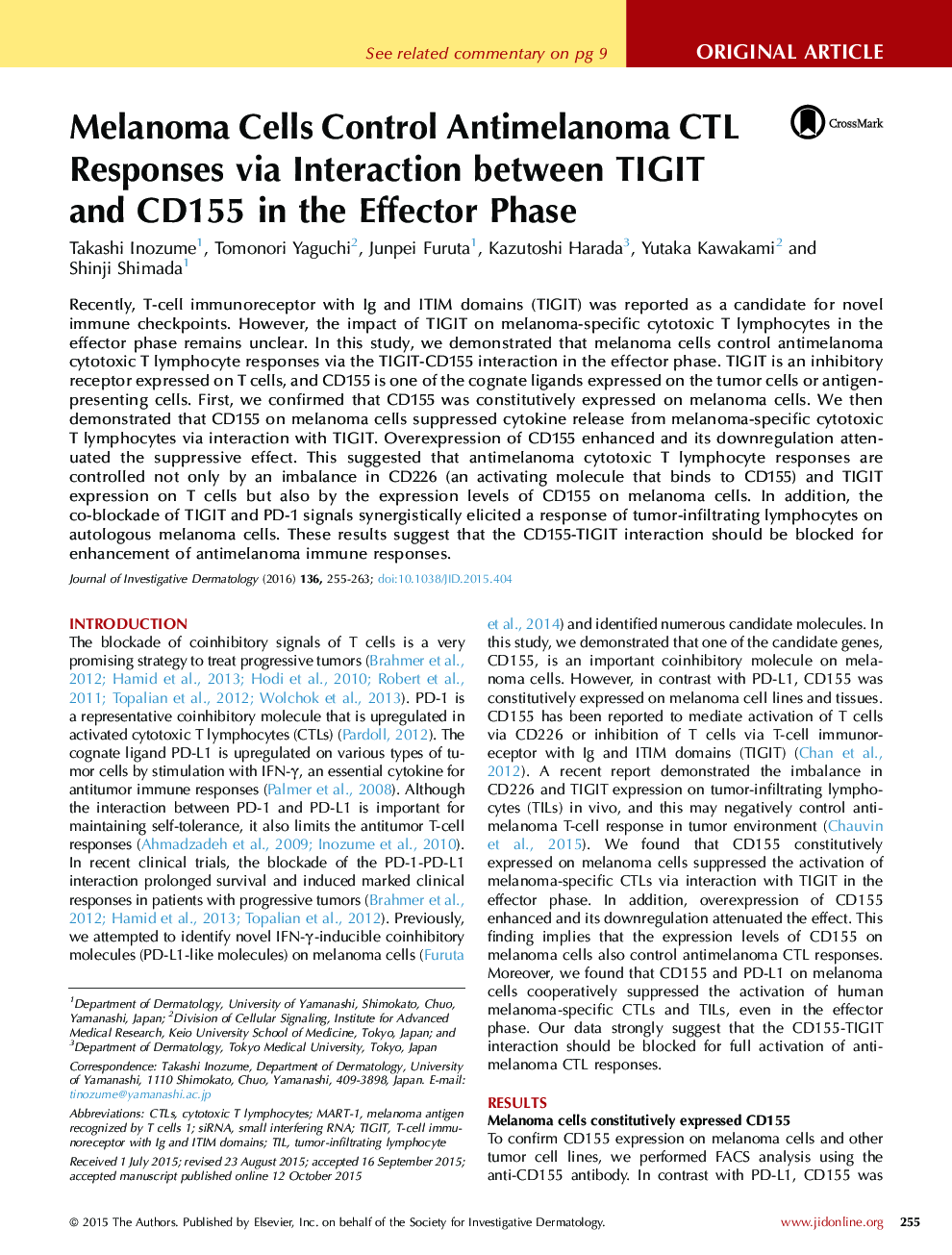| Article ID | Journal | Published Year | Pages | File Type |
|---|---|---|---|---|
| 6074799 | Journal of Investigative Dermatology | 2016 | 9 Pages |
Recently, T-cell immunoreceptor with Ig and ITIM domains (TIGIT) was reported as a candidate for novel immune checkpoints. However, the impact of TIGIT on melanoma-specific cytotoxic T lymphocytes in the effector phase remains unclear. In this study, we demonstrated that melanoma cells control antimelanoma cytotoxic T lymphocyte responses via the TIGIT-CD155 interaction in the effector phase. TIGIT is an inhibitory receptor expressed on T cells, and CD155 is one of the cognate ligands expressed on the tumor cells or antigen-presenting cells. First, we confirmed that CD155 was constitutively expressed on melanoma cells. We then demonstrated that CD155 on melanoma cells suppressed cytokine release from melanoma-specific cytotoxic TÂ lymphocytes via interaction with TIGIT. Overexpression of CD155 enhanced and its downregulation attenuated the suppressive effect. This suggested that antimelanoma cytotoxic T lymphocyte responses are controlled not only by an imbalance in CD226 (an activating molecule that binds to CD155) and TIGIT expression on T cells but also by the expression levels of CD155 on melanoma cells. In addition, the co-blockade of TIGIT and PD-1 signals synergistically elicited a response of tumor-infiltrating lymphocytes on autologous melanoma cells. These results suggest that the CD155-TIGIT interaction should be blocked for enhancement of antimelanoma immune responses.
